BancFirst Bundle
Who Really Controls BancFirst?
Unraveling the BancFirst SWOT Analysis reveals more than just strengths and weaknesses; it highlights the critical importance of understanding its ownership. BancFirst, a key player in the Oklahoma banking scene, has seen significant changes since its IPO in 1993. Knowing who owns BancFirst is essential for anyone looking to understand its strategic direction and future prospects.
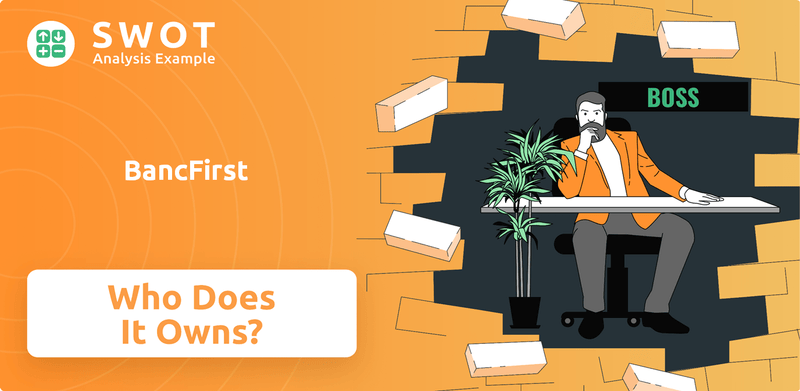
From its humble beginnings to its current status as a publicly traded company on the NASDAQ (BANF), BancFirst's ownership structure has evolved significantly. This exploration into BancFirst ownership will examine the BancFirst parent company, key BancFirst executives, and major shareholders, providing a comprehensive view of the company's governance. Understanding the BancFirst stock dynamics and BancFirst history is crucial for making informed decisions about this prominent financial institution.
Who Founded BancFirst?
The story of BancFirst's origins is rooted in the strategic consolidation of existing Oklahoma banks, spearheaded by H.E. 'Gene' Rainbolt. His vision and leadership were instrumental in shaping the company's formation and its focused acquisition strategy, which began in the mid-1980s.
Rainbolt's journey began in 1966 with the acquisition of Federal National Bank in Shawnee, Oklahoma, setting the stage for his future endeavors. Over the following decades, he acquired interests in numerous rural Oklahoma banks and established Thunderbird Financial Corporation to provide management services.
In 1985, Rainbolt's banks were consolidated under United Community Corporation, the initial holding company, which then began acquiring community banks. The formal rebranding to BancFirst occurred in 1989, with its headquarters established in Oklahoma City.
H.E. 'Gene' Rainbolt was the key figure in the formation of BancFirst. His acquisitions and consolidation efforts laid the groundwork for the company's growth. Rainbolt's influence extended to shaping Oklahoma's banking laws.
United Community Corporation served as the initial holding company in 1985. This entity was crucial in the early acquisition phase. It set the stage for the future consolidation under the BancFirst brand.
The BancFirst brand was formally established in 1989. This consolidation involved rebranding acquired banks under the BancFirst name. The headquarters was established in Oklahoma City.
The company's growth was primarily financed through the acquisition of existing banking assets. This involved a mix of stock and cash considerations. BancFirst did not rely on traditional startup venture capital.
Rainbolt's efforts significantly influenced changes in Oklahoma's banking laws. These changes allowed for the mergers and consolidation that defined BancFirst's early growth. This modernization was key to the company's strategy.
While specific figures for initial capitalization are not widely detailed, the focus was on acquiring existing banking assets. This approach was central to BancFirst's financial strategy. The company's early growth was organic.
Understanding the BancFirst's Revenue Streams & Business Model provides further insight into the financial foundation and growth strategy. The initial ownership structure was built on the acquisition of existing banks, a strategy that contrasts with traditional startup funding models. The company's history reveals a focus on strategic acquisitions and consolidation, setting the stage for its future in the banking sector. The early ownership structure was shaped by the consolidation of existing banking assets, with key figures like H.E. 'Gene' Rainbolt playing a pivotal role in shaping the company's trajectory. As of the latest financial reports, BancFirst continues to operate with a significant presence in Oklahoma, reflecting the initial consolidation strategy.
BancFirst SWOT Analysis
- Complete SWOT Breakdown
- Fully Customizable
- Editable in Excel & Word
- Professional Formatting
- Investor-Ready Format
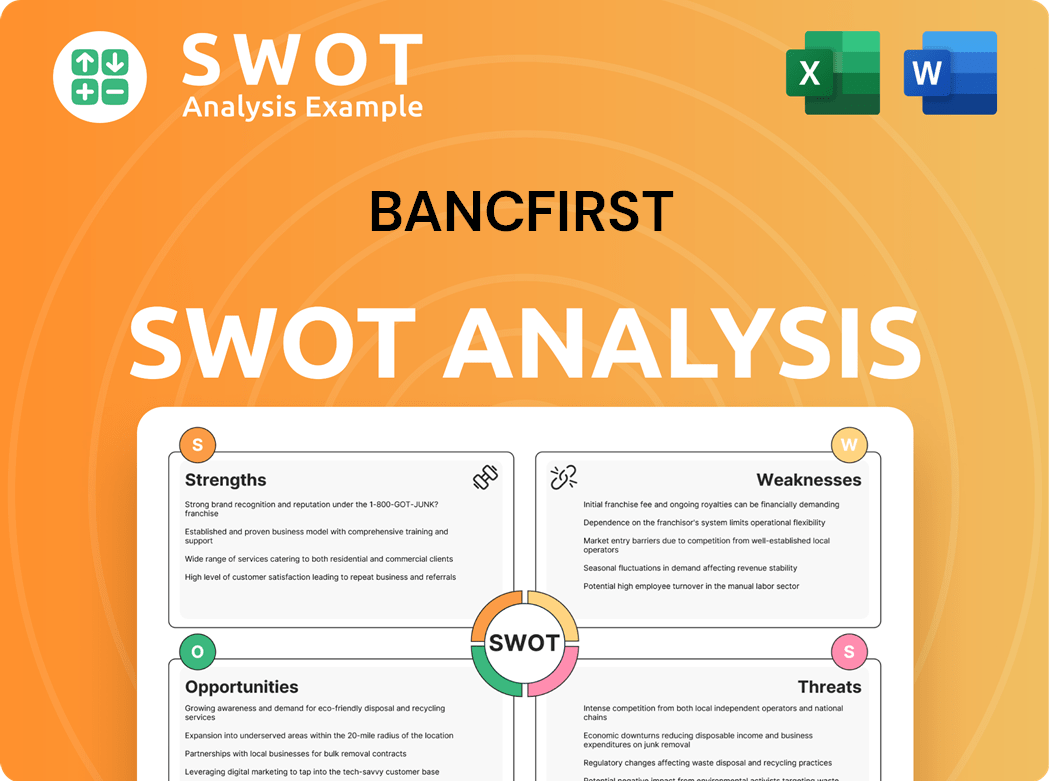
How Has BancFirst’s Ownership Changed Over Time?
The shift in ownership of BancFirst began with its transition from a privately held entity to a publicly traded company in 1993. This move, marked by an initial public offering (IPO), allowed its shares to be listed on the NASDAQ Global Select Market under the ticker symbol BANF. This change brought about increased regulatory oversight, including stringent filings and disclosures mandated by the Securities and Exchange Commission (SEC), impacting the company's operational transparency and shareholder relations.
The evolution of BancFirst's ownership structure has been significantly influenced by strategic decisions, including a series of acquisitions. David Rainbolt, who took on the role of CEO in 1992 and later became Chairman in 2017, spearheaded the company's growth through over 35 bank acquisitions. This expansion strategy not only broadened the company's market presence but also reshaped its ownership dynamics, as new shareholders were integrated through these transactions.
| Ownership Category | As of May 2025 | Percentage |
|---|---|---|
| Institutional Ownership | 521 owners | 49.84% |
| Insider Ownership | N/A | 1.74% |
| Mutual Funds | N/A | 35.51% |
As of filings towards the end of 2024, BancFirst's ownership is distributed among various types of shareholders, highlighting significant institutional interest alongside strong insider commitment. Major institutional shareholders, as of May 2025, include BlackRock, Inc., Vanguard Group Inc, Kayne Anderson Rudnick Investment Management Llc, and State Street Corp. Other notable institutional holders include iShares Core S&P Small-Cap ETF (IJR), Dimensional Fund Advisors Lp, BancFirst Trust & Investment Management, Vanguard Total Stock Market Index Fund Investor Shares (VTSMX), iShares Russell 2000 ETF (IWM), and Geode Capital Management, Llc. This structure, with a significant portion held by institutional investors, influences the company's strategy and governance, bringing in diverse perspectives and demands for performance and transparency. To learn more about the company's approach, you can explore the Marketing Strategy of BancFirst.
BancFirst transitioned from private to public ownership via an IPO in 1993, enhancing its visibility and regulatory compliance.
- Institutional investors hold a significant portion of BancFirst's shares, influencing its strategic direction.
- Insider ownership, as of May 2025, reflects continued alignment between executives and company performance.
- The Rainbolt family has played a crucial role in BancFirst's growth, particularly through strategic acquisitions.
- Understanding the ownership structure is key for investors analyzing BancFirst stock.
BancFirst PESTLE Analysis
- Covers All 6 PESTLE Categories
- No Research Needed – Save Hours of Work
- Built by Experts, Trusted by Consultants
- Instant Download, Ready to Use
- 100% Editable, Fully Customizable
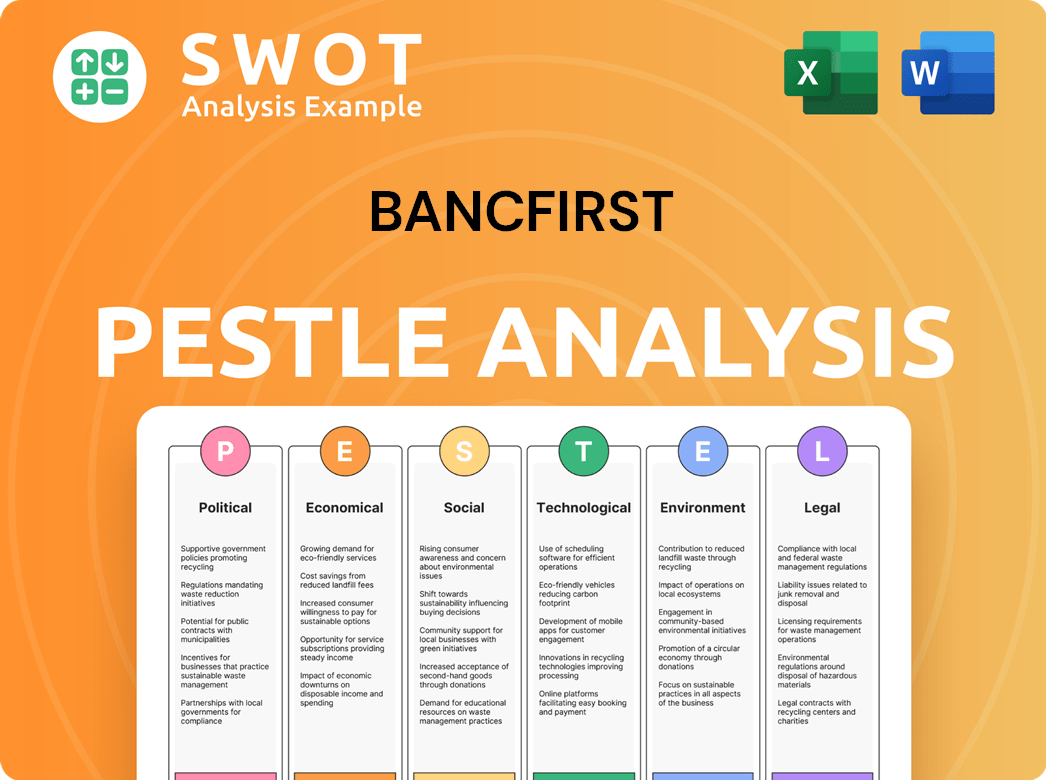
Who Sits on BancFirst’s Board?
The current board of directors of BancFirst Corporation oversees the company's strategic direction and governance. At the 2025 Annual Meeting of Shareholders, held on May 22, 2025, all 17 director nominees were elected. The Board recommended a 'FOR' vote for all nominees. This structure is crucial for understanding BancFirst ownership and its operational framework.
BancFirst's leadership team includes David E. Rainbolt as Executive Chairman and David Harlow as Chief Executive Officer (CEO), as of the end of 2024. Randy L. Niclas serves as the Chief Financial Officer (CFO). The company also has an Independent Directors' Committee, a Compensation Committee, and an Audit Committee, each with specific charters. Understanding the BancFirst board of directors is key to assessing the company's governance.
| Director | Principal Occupation | Other Public Company Directorships |
|---|---|---|
| David E. Rainbolt | Executive Chairman, BancFirst Corporation | None |
| David Harlow | Chief Executive Officer, BancFirst Corporation | None |
| Randy L. Niclas | Chief Financial Officer, BancFirst Corporation | None |
Each share of BancFirst Corporation common stock is entitled to one vote, with no cumulative voting. As of March 31, 2025, there were 33,241,564 shares of common stock outstanding and eligible to vote. The record date for the 2025 Annual Meeting was also March 31, 2025. For those looking to understand BancFirst shareholder information, this is a critical detail. The Growth Strategy of BancFirst provides additional insights into the company's operations.
Shareholders vote on key matters, including director elections and executive compensation. The company uses both electronic and mail options for voting. The ratification of the independent registered public accounting firm, Forvis Mazars, LLP, for the fiscal year ending December 31, 2025, was a routine matter.
- Each share gets one vote.
- No cumulative voting is allowed.
- Proxy statements detail voting processes.
- Routine matters include auditor ratification.
BancFirst Business Model Canvas
- Complete 9-Block Business Model Canvas
- Effortlessly Communicate Your Business Strategy
- Investor-Ready BMC Format
- 100% Editable and Customizable
- Clear and Structured Layout
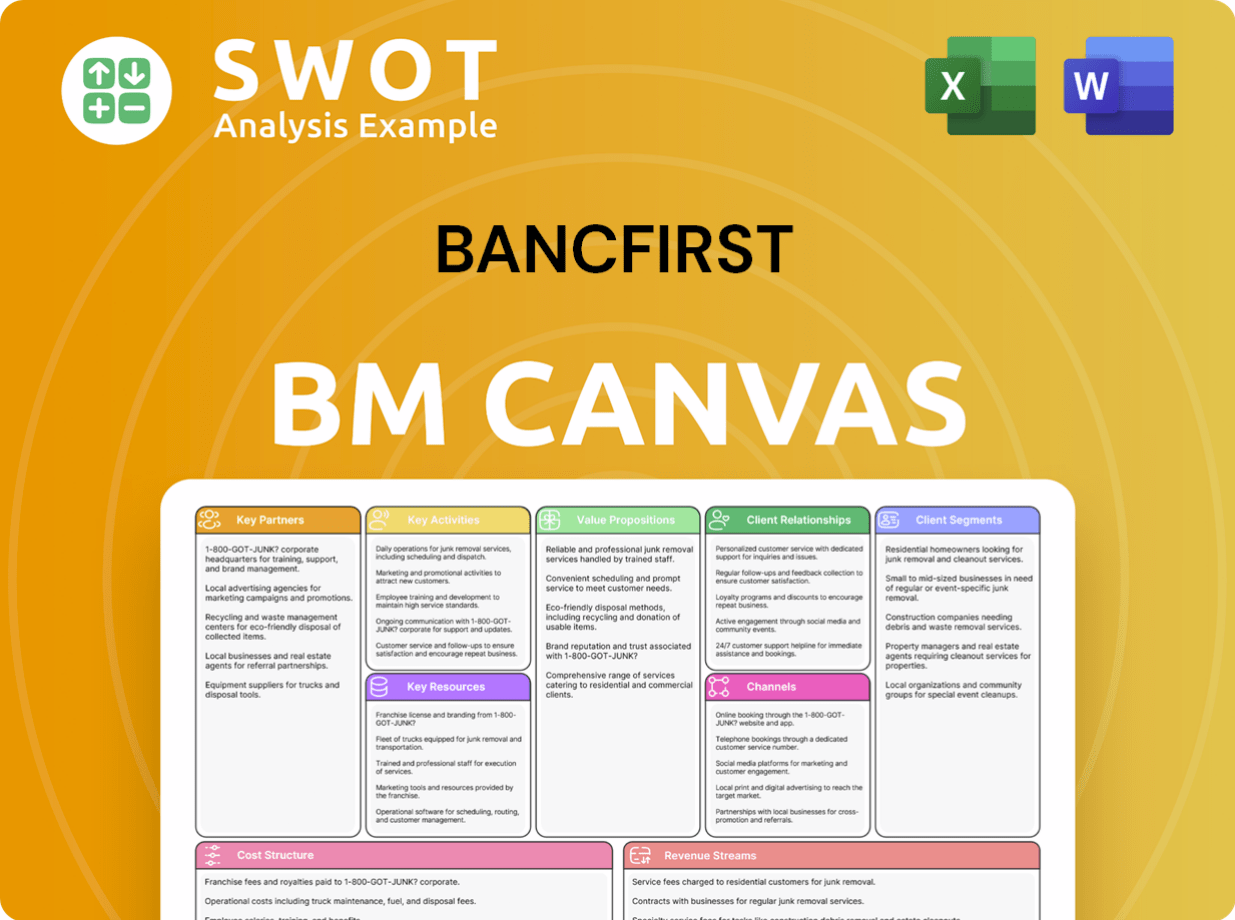
What Recent Changes Have Shaped BancFirst’s Ownership Landscape?
In the past few years, BancFirst Corporation has shown steady growth and a stable ownership structure. As of March 31, 2025, the company's total assets reached $14.0 billion, up from $13.6 billion in fiscal year 2024. Loans also increased to $8.1 billion by March 31, 2025, and deposits grew to $12.1 billion. This financial performance reflects the company's solid position in the market. Understanding the Target Market of BancFirst helps to understand its growth.
A significant recent development is the agreement to acquire American Bank of Oklahoma, announced in May 2025, for an undisclosed price. This acquisition, involving a community bank with around $385 million in assets, is expected to close in the third quarter of 2025, pending regulatory approvals. This move aligns with the company's historical strategy of expanding its presence in Oklahoma through acquisitions.
| Metric | Value (May 2025) | Details |
|---|---|---|
| Institutional Ownership | 521 owners | Significant portion of shares held by institutions |
| Major Institutional Holders | BlackRock, Inc., Vanguard Group Inc, State Street Corp | Key institutional investors |
| Insider Ownership | 1.74% | Consistent stakes by executives and directors |
| Dividend History | 27 consecutive years of increases | Consistent returns to shareholders |
| Dividend Payment | $0.46 per share | Quarterly cash dividend declared on July 15, 2025 |
Institutional ownership remains a significant part of the company's structure, with 521 institutional owners holding a large portion of the shares as of May 2025. Key institutional holders include BlackRock, Inc., Vanguard Group Inc, and State Street Corp. As of May 2025, insider ownership was 1.74%, showing ongoing executive and director involvement. The company has maintained a strong dividend track record, with 27 consecutive years of dividend increases and 33 consecutive years of dividend payments as of May 2025. The quarterly cash dividend declared was $0.46 per share, payable on July 15, 2025.
The ownership structure of the company includes significant institutional investors and a consistent level of insider ownership, reflecting a stable and well-managed company.
BancFirst executives, like Randy Foraker, demonstrate active participation through stock transactions, indicating their continued commitment to the company's success.
Analysts maintain a 'Market Perform' or 'Neutral' rating, reflecting the company's solid quarterly performance and effective cost control, which supports its stock stability.
The company's consistent dividend payments and strong financial reports underscore its financial health and effective capital management, benefiting shareholders.
BancFirst Porter's Five Forces Analysis
- Covers All 5 Competitive Forces in Detail
- Structured for Consultants, Students, and Founders
- 100% Editable in Microsoft Word & Excel
- Instant Digital Download – Use Immediately
- Compatible with Mac & PC – Fully Unlocked
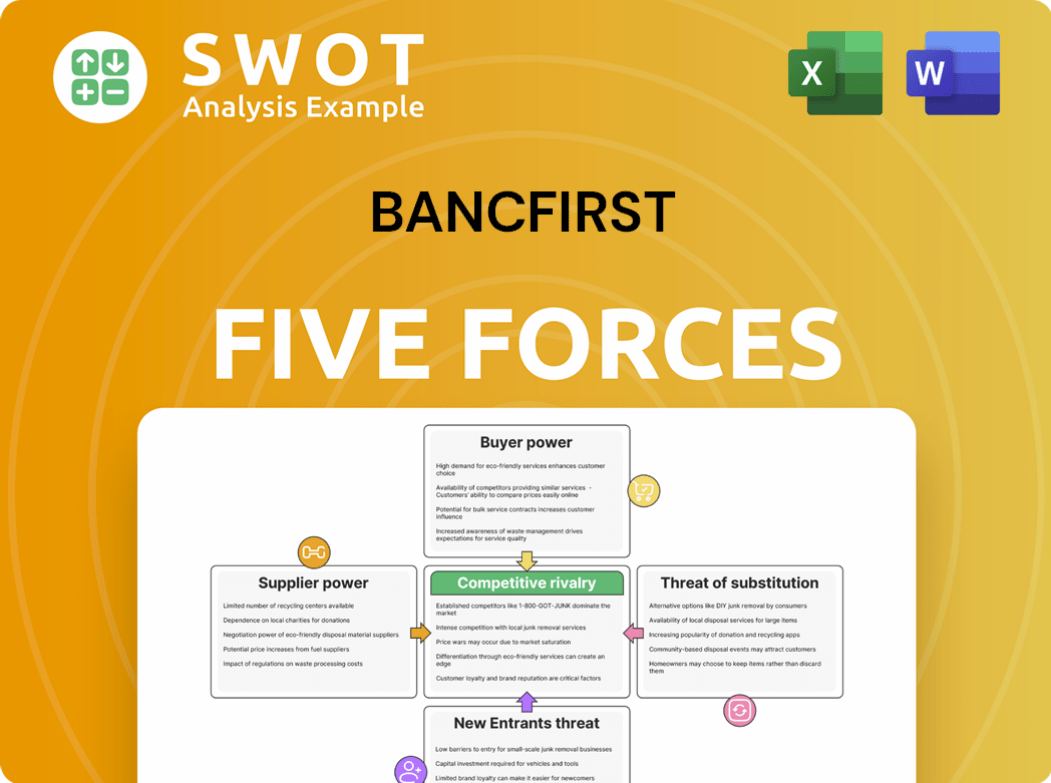
Related Blogs
- What are Mission Vision & Core Values of BancFirst Company?
- What is Competitive Landscape of BancFirst Company?
- What is Growth Strategy and Future Prospects of BancFirst Company?
- How Does BancFirst Company Work?
- What is Sales and Marketing Strategy of BancFirst Company?
- What is Brief History of BancFirst Company?
- What is Customer Demographics and Target Market of BancFirst Company?
Disclaimer
All information, articles, and product details provided on this website are for general informational and educational purposes only. We do not claim any ownership over, nor do we intend to infringe upon, any trademarks, copyrights, logos, brand names, or other intellectual property mentioned or depicted on this site. Such intellectual property remains the property of its respective owners, and any references here are made solely for identification or informational purposes, without implying any affiliation, endorsement, or partnership.
We make no representations or warranties, express or implied, regarding the accuracy, completeness, or suitability of any content or products presented. Nothing on this website should be construed as legal, tax, investment, financial, medical, or other professional advice. In addition, no part of this site—including articles or product references—constitutes a solicitation, recommendation, endorsement, advertisement, or offer to buy or sell any securities, franchises, or other financial instruments, particularly in jurisdictions where such activity would be unlawful.
All content is of a general nature and may not address the specific circumstances of any individual or entity. It is not a substitute for professional advice or services. Any actions you take based on the information provided here are strictly at your own risk. You accept full responsibility for any decisions or outcomes arising from your use of this website and agree to release us from any liability in connection with your use of, or reliance upon, the content or products found herein.